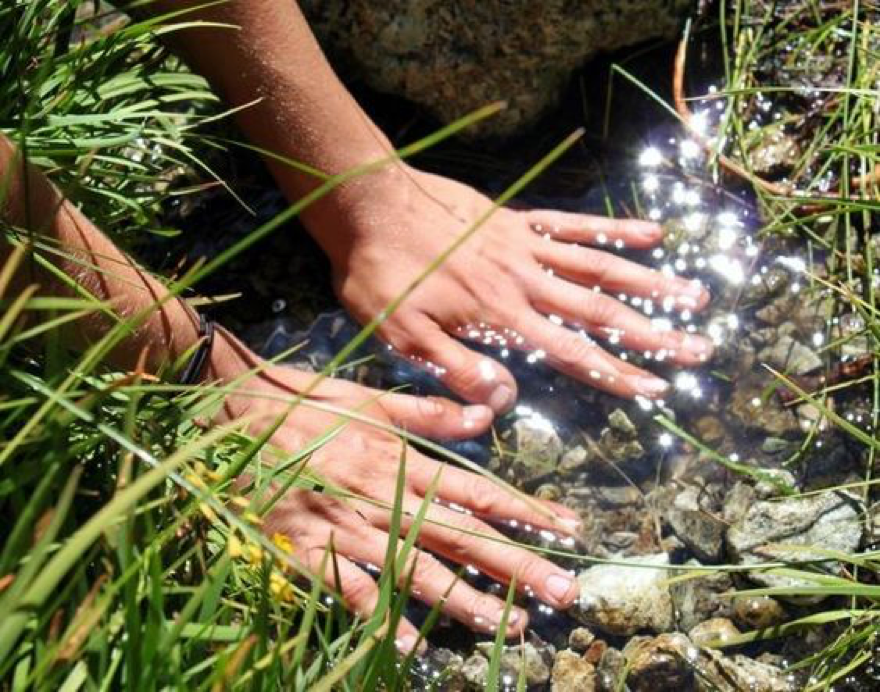What is Forest Therapy?
Forest Therapy also known as Shinrin-yoku, translated from the Japanese is Forest Bathing. Forest Bathing means to mindfully immerse our senses in nature and consciously experience the natural world. This method of immersion cultivates our connection with nature.
Shinrin-yoku is not a new concept. It has its roots in traditional Japanese culture. With over 40 years of scientific research Shinrin-yoku, is a proven preventative health practice that can alleviate stressful states. (Yoshifumi Miyazaki, 2011)
In Japan Shinrin-yoku is a national public health policy. It began as an intervention to address, the rising suicide rates and the increase of stress-related diseases in urban areas during the 1980’s.
The policy recognised that urbanisation had cut off urbanites from nature, and, combined with an excessive work ethic, was contributing to the declining health of the population.
The practice of Shinrin-yoku, successfully re-introduced nature back into urban Japanese culture and simultaneously demonstrated regular contact with nature can reduce stress related diseases.
This is a real life example of the theory of biophilia, proposed by biologist Edward O. Wilson in 1984, which suggests that humans possess an innate tendency to seek connections with nature and other forms of life. The term "biophilia" itself literally means "love of life or living systems." Wilson argued that humans have evolved alongside nature for millions of years, and as a result, we have an intrinsic affinity for the natural world.
Why Forest (Bathing) Therapy?
Urban environments see us spending more time indoors, more time sitting, more time consuming technology, watching screens and generally living sedentary lives.
Pandemics, social isolation and fast paced city living can impact our daily experiences and stress levels.
Long term stress, can cause stress-related conditions, such as cardiovascular disease, cancer, diabetes, obesity, inflammation, depression, and anxiety disorders.
Choosing to spend time in natural environments make us feel calm, relaxed and offsets negative health impacts from stressful urban environments and life situations.
A Forest Therapy experience, helps to rekindle an ancient bond we hold with nature. This experience helps to strengthen our connection with nature and forms the basis of our wellbeing. The intention of Forest Therapy is to ‘bridge the gap between us and the natural world’ revealing we are not separate to nature, but make up a part of nature as a whole.
A forest therapy session reminds us of the importance of our relationship with the natural world and maintaining this connection is vital for our physical, emotional, and spiritual well-being.
Health Benefits
Forest Therapy has proven mental and physical health benefits. Scientific research demonstrates that time spent on a Forest Therapy walk can modify the body’s biomarkers of stress and wellness. These physical changes are observed as having an immediate and positive effect on our physiology.
Direct Benefits of Forest Therapy Walks
Anxiety and depression levels are lowered
Positive mood improvement in happiness levels
Reduction in heart rate and blood pressure
Reduced cortisol levels indicating a reduction in our
stress hormone levels
Improved immune function as Natural Killer cells increase
in volume (anti-tumour)
Exposure to phytoncides which possess anti-bacterial,
anti-inflammatory, anti-fungal, anti-microbial and anti-viral properties
Indirect Benefits of Forest Therapy Walks
Reduced risk of heart and lung diseases
Reduced risk of obesity
Faster recovery from illness or surgery
Weight management assistance
Increased overall fitness levels
Less likelihood of feeling stress in typical day to day situations
Better and more regular sleep
Enhanced ability to concentrate
Increased energy levels
Higher self-confidence and more emotional stability
Regular Forest Therapy to accumulate therapeutic benefits
Forest Therapy demonstrates that nature has the power to restore mood, relieve our stresses and worries, bringing back our vitality and energy. When we take the time to be in nature we can be rejuvenated in mind, body and spirit.
Why a Forest Therapy Guide?
In an ever-changing environment, our fast paced world, we often find it difficult to just slow down. A Forest Therapy guide can help to slow movement down, shifting the focus from the mind to the body as we move in step with nature. Walking with a trained Forest Therapy guide can support you to feel safe and secure in a natural environment. As a Forest Therapy Guide, I take the responsibility of guiding the walk, so you can simply enjoy being in the moment.
What does a Forest Therapy Guide do?
As a Forest Therapy Guide, I facilitate engagement and connection with nature in a way that feels right for you. Our walk starts in a slow and deliberate way. The carefully selected trail aids in slowing our biorhythms to fall into step with nature. During the walk, you are invited to participate in a complementary blend of creative, physical and sensory activities, taking our cues direct from nature. These activities provide pathways for us to be open, curious and present in the environment. The Guide works in partnership with nature by opening the door to this experience, and tapping into the natural medicine that forests provide. The person leading this experience is not the therapist, but the guide that introduces people to the Forest - the true therapist. In this way we receive nature’s healing influence as we slow down in her company and we reset our brains and biorhythms to the natural world.



